Excerpts from Jim Conrad's
Naturalist Newsletter
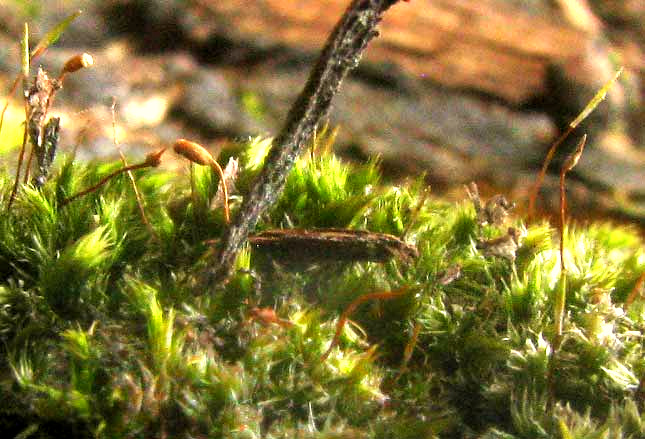
from the February 2, 2014 Newsletter issued from the Frio Canyon Nature Education Center in the valley of the Dry Frio River in northern Uvalde County, southwestern Texas, on the southern border of the Edwards Plateau; elevation ~1750m (~5750 ft); N29.62°, W99.86°; USA
ISOPTERYGIUM MOSS
With wildflowers not blossoming and grasses with their flowering heads mostly disintegrated, obscure patches of life overlooked until now draw attention. For example, consider the modest smudge of mossy greenness at the base of a young Ashe Juniper on the dry hillside near Juniper House, shown below:
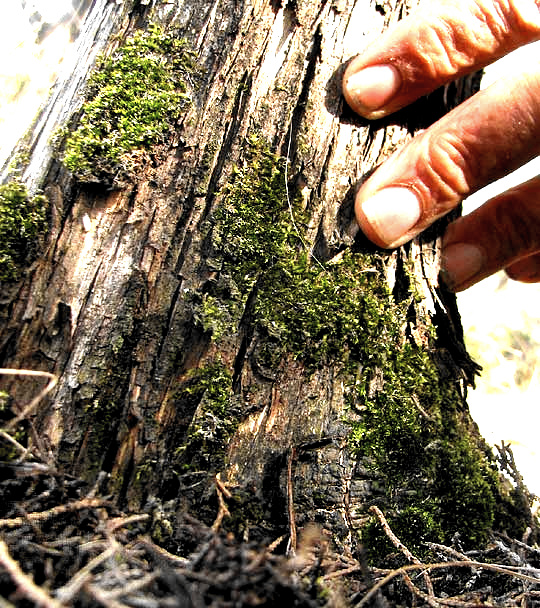
Since no spore-producing capsules are visible, and usually capsules are necessary for figuring out a species, at first I didn't think this moss was identifiable. However, its stems and leaves were so small that I hoped some especially tiny capsules might be present, so I lay onto the ground, put my nose right up against the patch, and by golly there were a few, only about 5mm tall (3/16ths inch), as shown at the top of this page.
A couple of mosses were brought back to Juniper House, for it was certain that to figure out this one I'd need to look at microscopic details. For example, the shape of the capsule needed to be studied, and that's shown below.
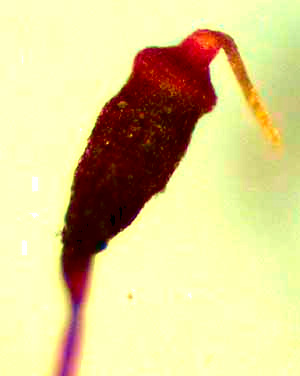
The capsule is brown and nods downward atop its vertical stalk. In moss lingo, a nodding capsule is said to be "cernuous." The capsule is topped by a light brown cap, the operculum, with a bent peak. When the capsule is ready to release its spores, the operculum comes off and spores escape through a hole in the capsule's top. One slightly unusual feature of this capsule is that its top constricts just below its attachment with the operculum.
Two leafy moss stems and a reddish stalk are shown below:
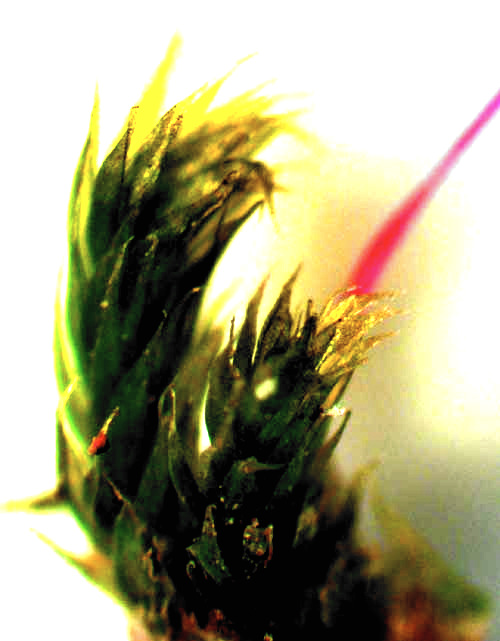
Here we see that the moss bodies, instead of being short stem growing upright, as with many species, run along the ground with their tips curving upward. The leaves, only about 1.5mm long (1/16th inch), gradually taper to a sharp point. Many moss species have their capsule stocks issuing from the stem tip, but here we see that this reddish one arises from the stem behind the tips.
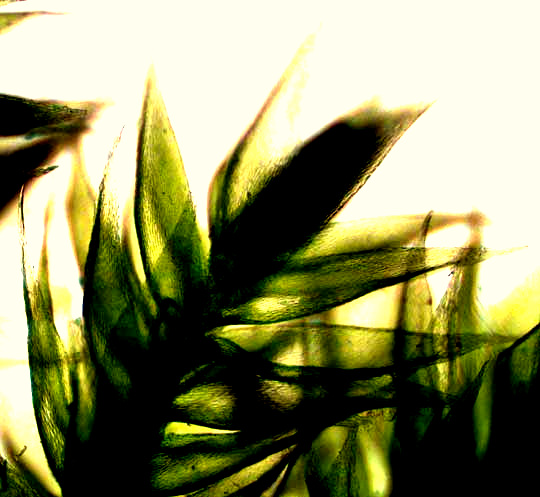
Above you can see that the leaves margins are for the most part toothless, or "entire," though toward the tips sometimes very tiny, spiny teeth appear.
These are all worthy key features, but so far nothing had turned up really distinguishing this species from a lot of other very similar species. My last hope was to go in at a higher magnification to see the cell shape, and that's shown below:
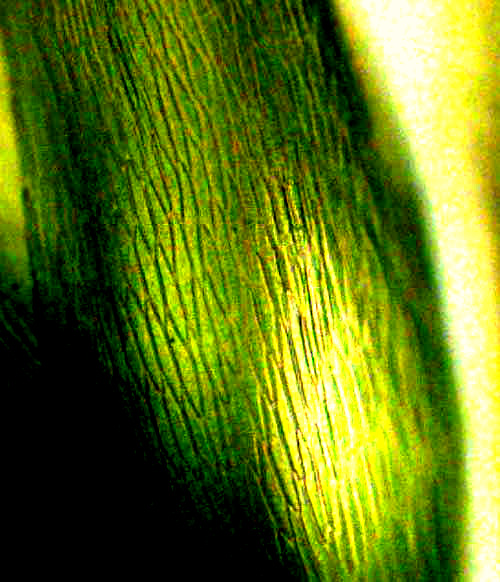
Bingo! These cells, occupying a leaf's middle section, are very unusual. Leaf cells in most moss leaves are squarish, or rectangular, or roundish, and often the cell walls are thick and opaque. These cells are long and narrow, taper at both ends, and the cell walls are thin and fairly transparent. You might enjoy comparing these cells with those of a moss we looked at last month, the Controversial Weissia Moss, at https://www.backyardnature.net/n/14/140105mq.jpg.
Thanks to these remarkable cells and the comprehensive list of moss species listed for Uvalde County for Dr. Cynthia Galloway's South Texas Moss Project, our little tree-base moss reveals itself as ISOPTERYGIUM TENERUM, sometimes known as the Isopterygium Moss.
The online Bryophyte Flora of North America describes the Isopterygium Moss as occupying dry, wooded regions, swamps and wet roadside ditches, rotten logs, stumps, bases of trees, sandy soil, and rarely on sedimentary rock, so this is a very adaptable species. It's also widespread, occurring in much of eastern North America, south into South America, the West Indies, and in Italy. It's described as one of the most common mosses in Central Florida.
So, how about that? Winter botany at its best...